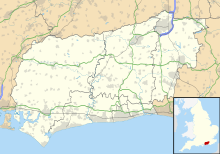London Gatwick
| Gatwick Airport | |||||||||||||||
|---|---|---|---|---|---|---|---|---|---|---|---|---|---|---|---|
 |
|||||||||||||||
| Summary | |||||||||||||||
| Airport type | Public | ||||||||||||||
| Operator | Gatwick Airport Limited | ||||||||||||||
| Serves | London, United Kingdom | ||||||||||||||
| Location | Crawley, West Sussex | ||||||||||||||
| Hub for | British Airways | ||||||||||||||
| Elevation AMSL | 203 ft / 62 m | ||||||||||||||
| Coordinates | 51°08′53″N 000°11′25″W / 51.14806°N 0.19028°WCoordinates: 51°08′53″N 000°11′25″W / 51.14806°N 0.19028°W | ||||||||||||||
| Website | www |
||||||||||||||
| Map | |||||||||||||||
| Location in West Sussex, England | |||||||||||||||
| Runways | |||||||||||||||
|
|||||||||||||||
| Statistics (2016) | |||||||||||||||
|
|||||||||||||||
| Passengers | 43,119,628 |
|---|---|
| Passenger change 15–16 |
|
| Aircraft Movements | 280,666 |
| Movements change 15–16 |
|
| Gates | 115 (in terminal) |
Gatwick Airport (also known as London Gatwick) (IATA: LGW, ICAO: EGKK) is a major international airport in south-east England, 29.5 miles (47.5 km) south of Central London and 2.7 nautical miles (5.0 km; 3.1 mi) north of Crawley. It is the second-busiest airport by total passenger traffic in the United Kingdom, after London Heathrow. Gatwick is the eighth-busiest airport in Europe.
Gatwick opened as an aerodrome in the late 1920s, and has been in use for commercial flights since 1933. The airport has two terminals, the North Terminal and the South Terminal, which cover areas of 98,000 m2 (1,050,000 sq ft) and 160,000 m2 (1,700,000 sq ft) respectively. It operates as a single-runway airport, using a main runway with a length of 3,316 m (10,879 ft). A secondary runway is available but, due to its proximity to the main runway, can only be used if that is out of use. In 2016, 43.1 million passengers passed through the airport, a 7.1% increase compared with 2015.
The land on which Gatwick Airport stands was first developed as an aerodrome in the late 1920s. The Air Ministry approved commercial flights from the site in 1933, and the first terminal, "The Beehive", was built in 1935. Scheduled air services from the new terminal began the following year. Major development work at the airport took place during the 1950s. The airport buildings were designed by Yorke Rosenberg Mardall between 1955 and 1988.
In the 1960s, British United Airways (BUA) and Dan-Air were two of the largest British independent airlines at Gatwick, with the former establishing itself as the dominant scheduled operator at the airport as well as providing a significant number of the airport's non-scheduled services and the latter becoming its leading provider of inclusive tour charter services. Further rapid growth of charter flights at Gatwick was encouraged by the Ministry of Aviation, which instructed airlines to move regular charter flights from Heathrow. Following the takeover of BUA by Caledonian Airways at the beginning of the following decade, the resulting airline, British Caledonian (BCal), became Gatwick's dominant scheduled airline during the 1970s. While continuing to dominate scheduled operations at Gatwick for most of the 1980s, BCal was also one of the airport's major charter airlines until the end of the 1970s (together with Dan-Air, Laker Airways and British Airtours). As a result of conditions imposed by Britain's Monopolies and Mergers Commission on the takeover of BCal by the then newly privatised British Airways (BA) at the end of the 1980s, Dan-Air and Air Europe assumed BCal's former role as Gatwick's dominant scheduled short-haul operator while BA continued in BCal's erstwhile role as the airport's most important scheduled long-haul operator. Following the demise of Air Europe and Dan-Air (both of which had continued to provide a significant number of charter flights in addition to a growing number of scheduled short-haul flights at Gatwick) in the early 1990s, BA began building up Gatwick into a secondary hub (complementing its main hub at Heathrow). These moves resulted in BA becoming Gatwick's dominant airline by the turn of the millennium. BA's subsequent decision to de-hub Gatwick provided the space for EasyJet to establish its biggest base at the airport and to become its dominant airline.
...
Wikipedia

